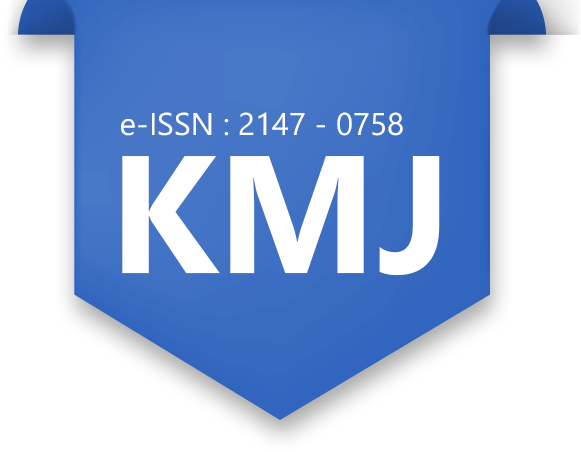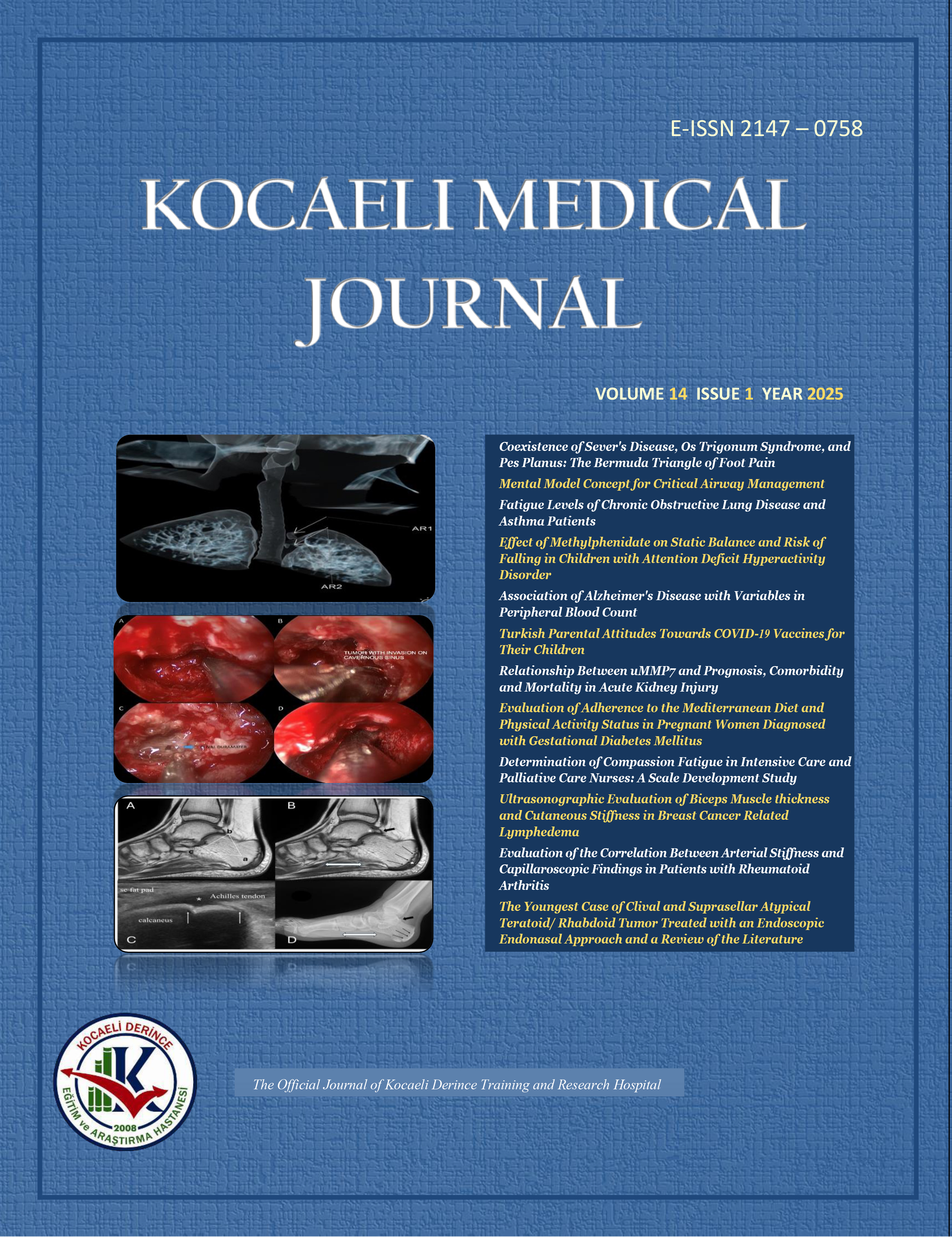
Comparison of TEP and Lichtenstein technique in long-term follow-up: A randomized controlled trial
Murat Coşkun1, Hamdi Taner Turgut1, Mehmet OZYILDIZ1, Elif Atar2, Adem Yuksel31Department Of General Surgery, University Of Health Sciences, Derince Training And Research Hospital, Kocaeli2Department Of Anesthesiology Reanimation And Intensive Care Medicine, University Of Health Sciences, Derince Training And Research Hospital, Kocaeli
3Department Of General Surgery, Sakarya University, Faculty Of Medicine, Sakarya
INTRODUCTION: Open tension-free mesh repair (Lichtenstein) and laparoscopic totally extraperitoneal (TEP) repair are the most preferred techniques for inguinal hernia surgery. This study aimed to compare these two techniques' early and long-term results.
METHODS: One hundred two patients were randomly divided into two groups (TEP, n=51; Lichtenstein, n=51). The groups were compared regarding complications (early, late), postoperative pain status, time to return to work and recurrence.
RESULTS: The TEP group had a lower early postoperative visual analogue scale score (2 vs 5.27; p<0.001), less requirement for postoperative analgesia use (31.4% vs 70.6%; p<0.001), and earlier time to return to work (4.2 vs 20.4; p<0.001). Both groups had similar results regarding early and late postoperative complications. The mean follow-up period was 72,8±17.9 months. There was no difference between the groups regarding recurrence (TEP vs Lichtenstein; 2% vs 2%, p: 0.999).
DISCUSSION AND CONCLUSION: Both techniques are effective in inguinal hernia repair with low long-term recurrence and complication rates. Among the two approaches, the most significant advantages highlighting the TEP procedure are less postoperative pain and a shorter time to return to work.
Uzun Dönem Takipte TEP ve Lichtenstein Tekniğinin Karşılaştırılması: Randomize Kontrollü Çalışma
Murat Coşkun1, Hamdi Taner Turgut1, Mehmet OZYILDIZ1, Elif Atar2, Adem Yuksel31Sağlık Bilimleri Üniversitesi Kocaeli Derince Eğitim Ve Araştırma Hastanesi, Genel Cerrahi Kliniği, Kocaeli2Sağlık Bilimleri Üniversitesi Kocaeli Derince Eğitim Ve Araştırma Hastanesi, Anestezi Reanimasyon Ve Yoğun Bakım Kliniği, Kocaeli
3Sakarya Üniversitesi Tıp Fakültesi, Genel Cerrahi Ana Bilim Dalı, Sakarya
GİRİŞ ve AMAÇ: Açık gerilimsiz mesh onarımı (Lichtenstein) ve laparoskopik total ekstraperitoneal (TEP) onarım, inguinal herni cerrahisinde en çok tercih edilen tekniklerdir. Bu çalışma, bu iki tekniğin erken dönem ve uzun dönem sonuçlarını karşılaştırmayı amaçlamıştır.
YÖNTEM ve GEREÇLER: Yüz iki hasta(102) randomize olarak iki gruba ayrıldı (TEP, n=51; Lichtenstein, n=51). Gruplar, komplikasyon (erken, geç), postoperatif ağrı durumu, işe dönüş süresi ve nüks açısından karşılaştırıldı.
BULGULAR: TEP grubunda, erken postoperatif ağrı skorunun (VAS) (2 vs. 5.27; p<0.001) daha düşük, postoperatif analjezi kullanımı gereksiniminin daha az (%31.4 vs %70.6; p<0.001) ve işe dönüş süresinin daha kısa (4.2 vs 20.4; p<0.001) olduğu bulundu. Ameliyat sonrası erken ve geç dönem komplikasyon oranı, her iki grupta benzerdi. Ortalama takip süresi 72,8±17,9 aydı ve nüks açısından gruplar arasında fark yoktu (TEP'e karşı Lichtenstein; %2'ye karşı %2, p: 0.999).
TARTIŞMA ve SONUÇ: Her iki teknik, düşük uzun dönem nüks ve komplikasyon oranları ile inguinal herni onarımında etkilidir. İki yaklaşım arasında TEP prosedürünü öne çıkaran en önemli avantajlar, ameliyat sonrası daha az ağrı olması ve işe dönüş süresinin kısa olmasıdır.
Manuscript Language: English












